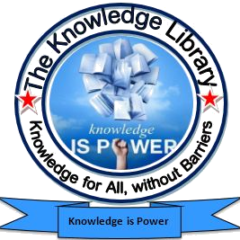Who was Anna Bhau Sathe?
- Anna Bhau Sathe, born Tukaram Bhaurao Sathe on August 1, 1920, in Maharashtra’s Wategaon village, emerged as a prominent figure in the field of literature, poetry, and social activism.
- His journey from humble beginnings in a Dalit family to becoming a prolific writer and folk poet is a testament to his indomitable spirit and commitment to social reform.
Early Life and Struggles
- Mumbai Sojourn: In 1930, Sathe’s family moved to Mumbai, where he worked as a porter, hawker, and cotton mill helper, enduring the hardships of working-class life.
- Labour Activism: His participation in the 1934 workers’ strike, led by the Lal Bawta Mill Workers Union, marked the beginning of his engagement in labor and social issues.
- Learning to Read and Write: Denied schooling due to his Dalit identity, Sathe joined labor study circles where he learned to read and write.
Evolution as a Writer
- Early Poetry: His first poem, focusing on the menace of mosquitoes in the labour camp, laid the foundation for his future creative endeavours.
- Cultural Group: Sathe formed the Dalit Yuvak Sangh, a cultural group that composed poems reflecting workers’ protests and agitations.
- Influence of Progressive Writers: The Progressive Writers Association’s national formation, with writers like Premchand and Faiz Ahmad Faiz, exposed him to translated Russian works, inspiring him to write plays, stories, and novels.
Wide-ranging Impact of His Work
- Spreading Awareness: Together with his group, Sathe travelled across Mumbai, raising awareness about workers’ rights and social issues.
- Prolific Output: Over 49 years, he authored 32 novels, 13 collections of short stories, four plays, a travelogue, and 11 ballads (povadas).
- Cinematic and International Recognition: Several of his works were adapted into films, and some were translated into other languages, including Russian. His “Bangalchi Hak” was presented at London’s Royal Theatre.
- Depiction of Social Realities: Sathe’s literature delved into the caste and class realities of Indian society during his time.
Left-leaning Ideology and Russian Connection
- Influence of Marxism: While influenced by Marxism, he also depicted the harsh realities of the caste system in his work.
- The Lal Bawta Kala Pathak: In 1943, Sathe founded this group, which toured Maharashtra, performing programs on caste atrocities, class conflict, and workers’ rights.
- Dedication to Dr. Ambedkar: His most famous novel, “Fakira,” was dedicated to Dr. B.R. Ambedkar, reflecting his commitment to the Dalit cause.
Russian Inspiration
- Maxim Gorky’s Influence: Often referred to as the “Maxim Gorky of Maharashtra,” Sathe drew inspiration from Gorky’s work “The Mother” and the Russian Revolution, evident in his writings.
- Visit to Russia: In 1961, Sathe travelled to Russia with a group of other Indians, fostering his connection with Russian culture.



 Users Today : 141
Users Today : 141 Total views : 706691
Total views : 706691